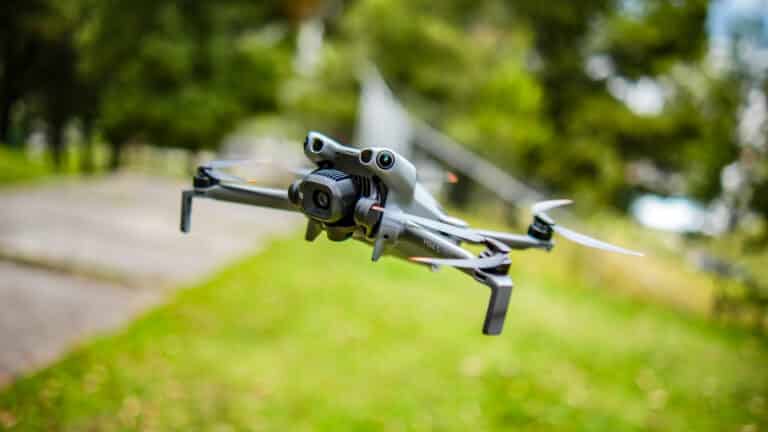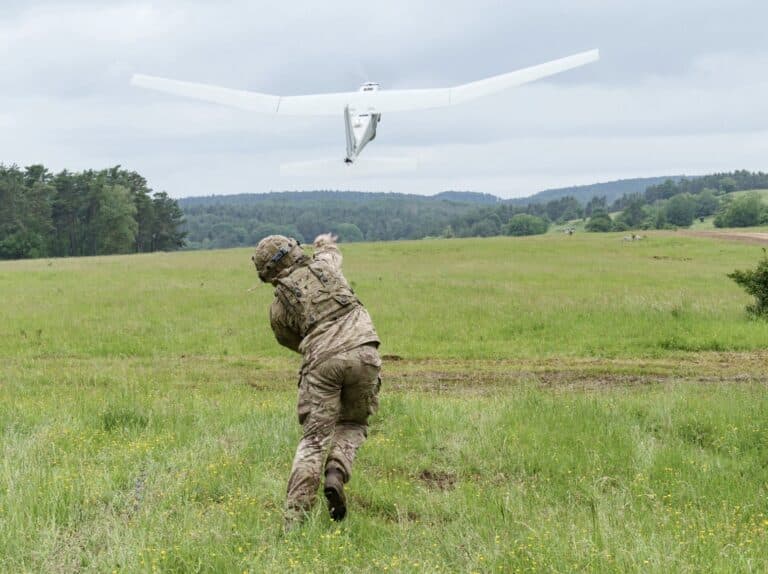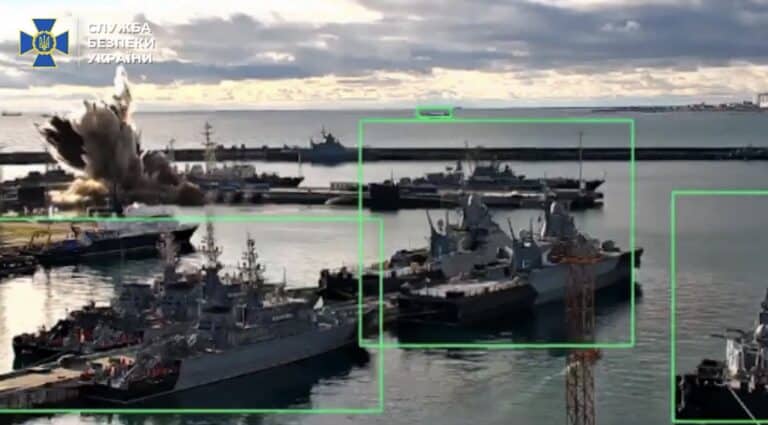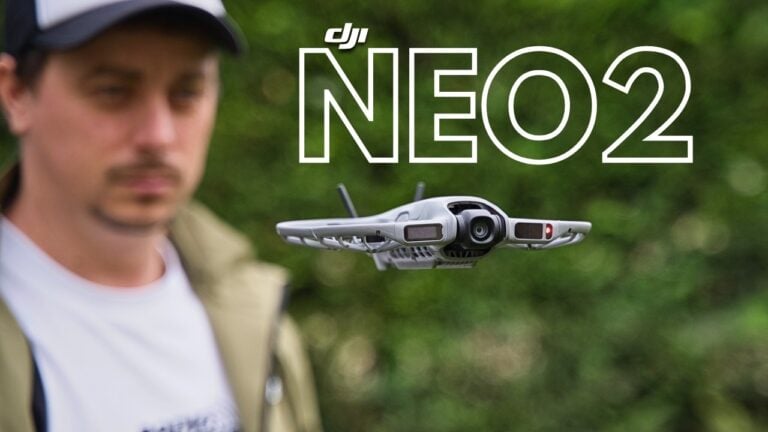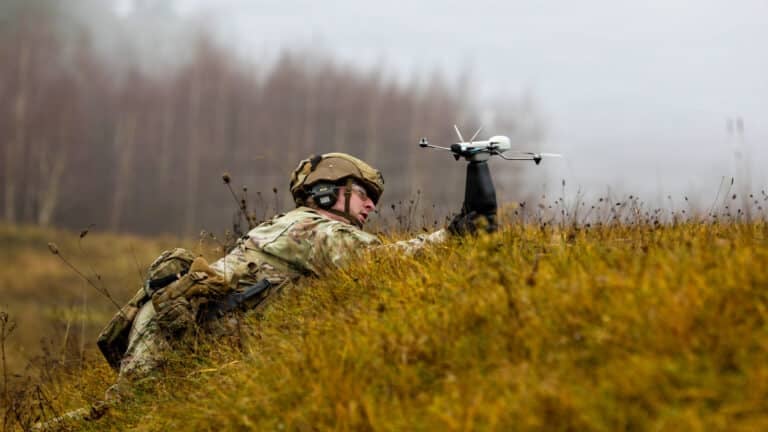Russian Forces Install Barriers in Sevastopol Bay to Thwart Ukrainian Sea Drones

Amazon Drone Deals: DJI Mini 5 Pro Fly More Combo with DJI RC2 now for $1,099!
Russia’s Countermeasure to Ukrainian Sea Drone Threat
Russian invasion forces have taken a significant step to protect their naval fleet in Sevastopol Bay by installing floating barriers. This move aims to shield their vessels from the persistent threat posed by Ukrainian sea drones. According to a report by the Crimean Wind Telegram channel, this defensive measure includes five lines of barriers stretching across the entrance to the bay.
Floating Barriers: A New Line of Defense
The installation of these barriers was noted in a recent update by the Crimean Wind Telegram channel and reported by Ukrinform. The barriers, clearly marked by a red line on the map provided, span between the breakwaters at the entrance of Sevastopol Bay. This strategic placement is intended to create a formidable obstacle for any sea drones attempting to breach the bay.
Protecting the Fleet
The primary goal of these barriers is to safeguard the remaining Russian fleet stationed in the bay. Ukrainian sea drones have proven to be a persistent threat, capable of inflicting substantial damage on naval vessels. By deploying these barriers, Russian forces aim to mitigate this risk and ensure the security of their maritime assets.
Evidence of Activity
Accompanying the report are photos that not only show the barriers but also bulkers loading what is reported as stolen Ukrainian grain at the Avlita terminal. This detail adds a layer of complexity to the situation, highlighting ongoing tensions and the broader impact of the conflict on regional resources.
The Growing Use of Sea Drones in Warfare
The use of sea drones in modern warfare has been a game-changer, offering a new method for nations to exert power and influence over contested waters. These drones, often small and difficult to detect, can carry out surveillance and offensive operations with significant precision. Their deployment by Ukrainian forces underscores the evolving nature of the conflict and the innovative tactics being employed.
The Effectiveness of Barriers
While the installation of floating barriers is a proactive measure, their effectiveness against advanced sea drone technology remains to be seen. Drones can vary widely in size, capabilities, and operational range, making it a challenge to devise foolproof defenses. The success of these barriers will depend on their ability to withstand potential breaches and the adaptability of Ukrainian tactics.
A Tactical Move in an Ongoing Conflict
The installation of floating barriers across Sevastopol Bay by Russian forces represents a tactical effort to protect their naval fleet from Ukrainian sea drones. This move highlights the ongoing strategic maneuvers and countermeasures being employed in the conflict. As the situation evolves, the effectiveness of these barriers and the response from Ukrainian forces will be critical in determining the future dynamics of naval warfare in the region.
The barriers are a testament to the evolving tactics in modern warfare, where technology and strategy continuously adapt to new threats. The coming months will reveal whether these barriers can indeed provide the security the Russian fleet seeks or if Ukrainian sea drones will find ways to overcome this new obstacle.
Discover more from DroneXL.co
Subscribe to get the latest posts sent to your email.
Check out our Classic Line of T-Shirts, Polos, Hoodies and more in our new store today!

MAKE YOUR VOICE HEARD
Proposed legislation threatens your ability to use drones for fun, work, and safety. The Drone Advocacy Alliance is fighting to ensure your voice is heard in these critical policy discussions.Join us and tell your elected officials to protect your right to fly.
Get your Part 107 Certificate
Pass the Part 107 test and take to the skies with the Pilot Institute. We have helped thousands of people become airplane and commercial drone pilots. Our courses are designed by industry experts to help you pass FAA tests and achieve your dreams.

Copyright © DroneXL.co 2025. All rights reserved. The content, images, and intellectual property on this website are protected by copyright law. Reproduction or distribution of any material without prior written permission from DroneXL.co is strictly prohibited. For permissions and inquiries, please contact us first. DroneXL.co is a proud partner of the Drone Advocacy Alliance. Be sure to check out DroneXL's sister site, EVXL.co, for all the latest news on electric vehicles.
FTC: DroneXL.co is an Amazon Associate and uses affiliate links that can generate income from qualifying purchases. We do not sell, share, rent out, or spam your email.







